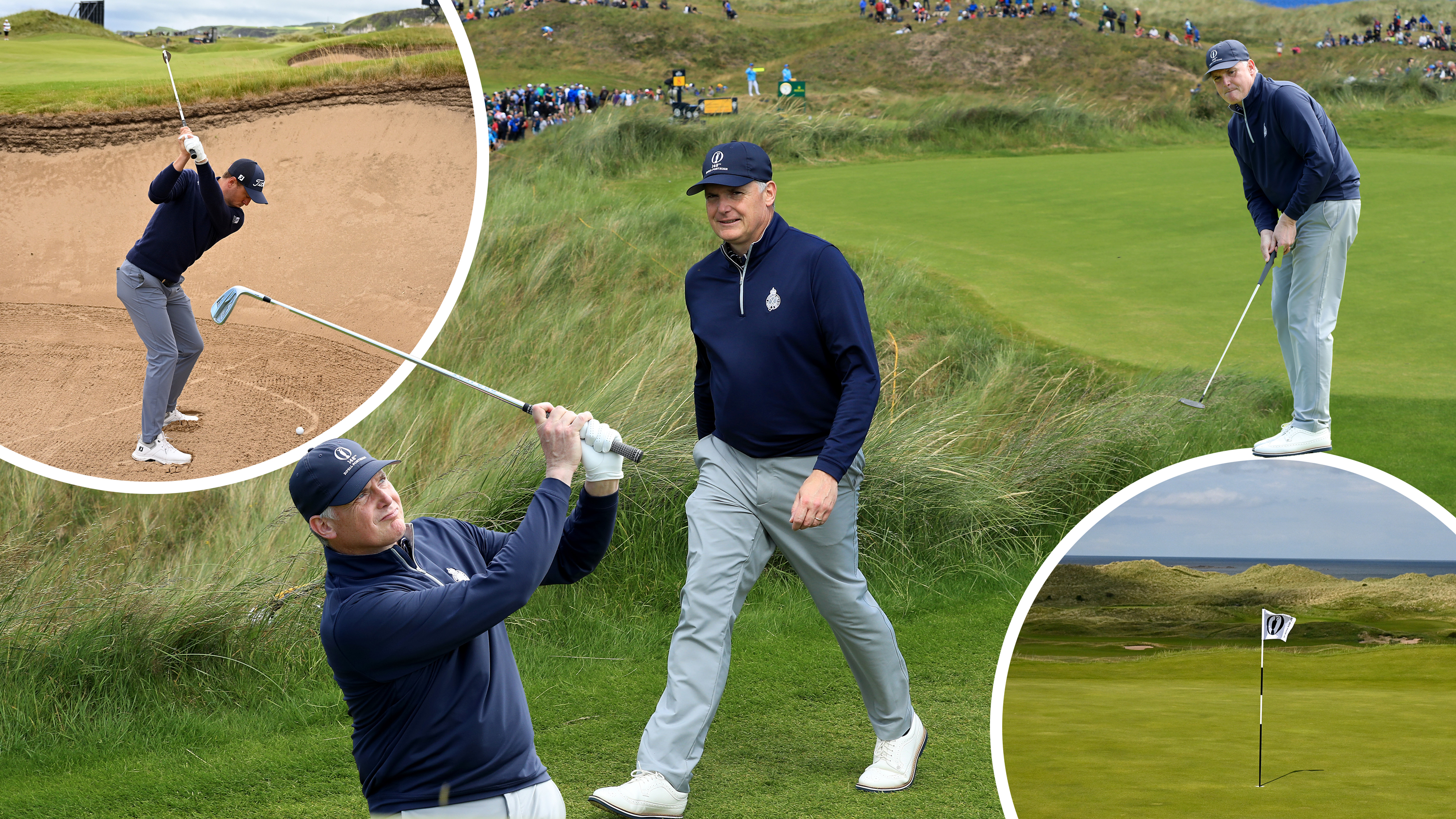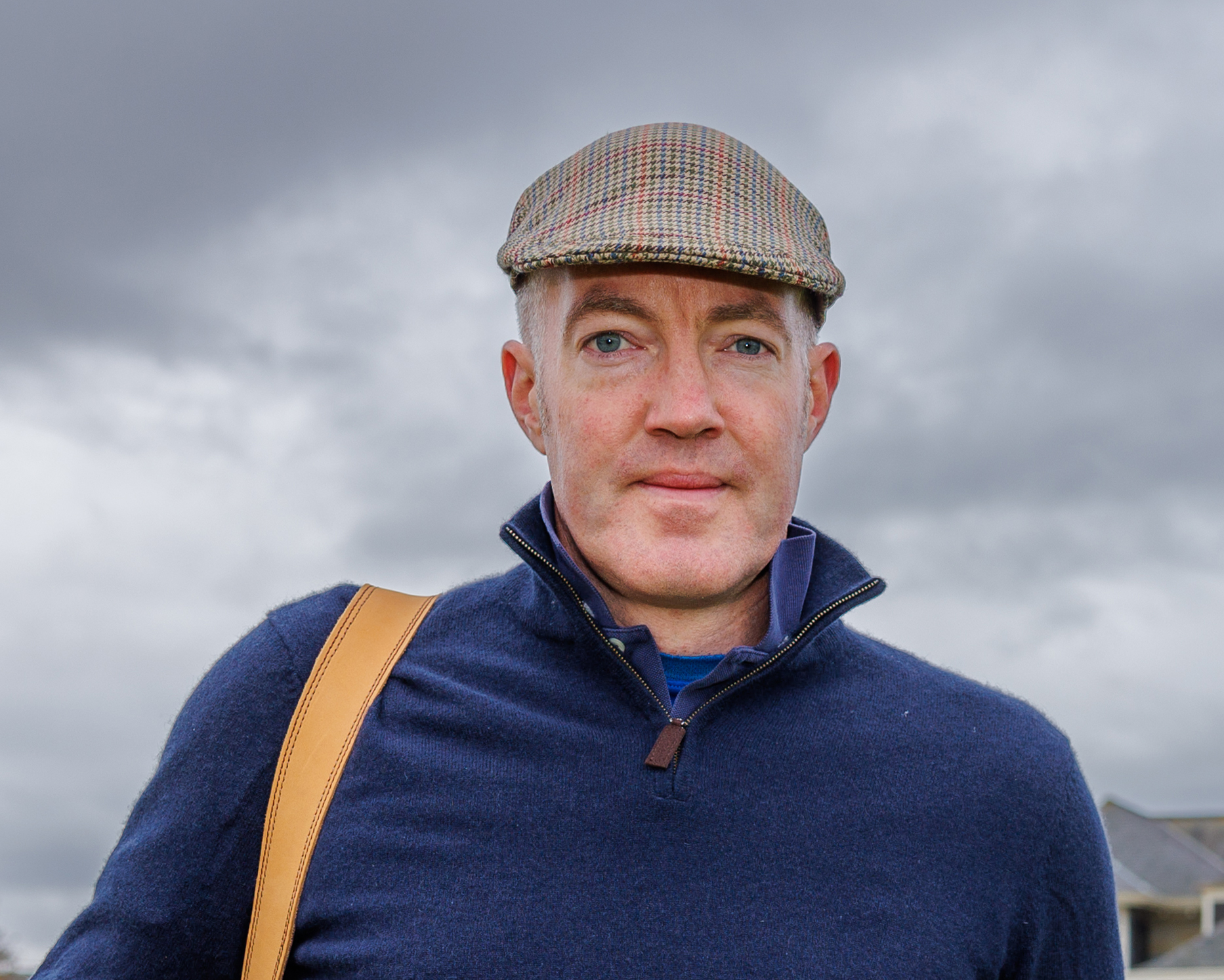Royal Portrush Course Guide: Head Pro Gary McNeill Shares The Inside Track On The 2025 Open Championship Venue
Gary McNeill, head professional at Royal Portrush, tells us all about the Dunluce links – including four pivotal holes that could shape the tournament


Baz Plummer
Ranked 7th on Golf Monthly’s most recent Top 100 Courses listing, the Dunluce at Royal Portrush is one of the great links courses of the world.
It’s a classic Harry Colt design with impressive recent improvements by Martin Ebert. From July 17-20, Portrush will play host to The Open once again following Shane Lowry's emphatic win in 2019.
Ahead of The 153rd Open Championship, we decided to dig into our archive in the search for key information that will help you prepare for the final men's Major - whether you are picking your best bets for the Open Championship or just looking to immerse yourself in the majesty of Royal Portrush.
Gary McNeill, head professional at Royal Portrush since 1999, shared his thoughts on the course ahead of the 2019 Open Championship - providing an excellent insight into what players and spectators can expect as battle commences for the Claret Jug...
Royal Portrush Course Guide: 153rd Open Championship Venue

Gary McNeill has been the Head Professional at Royal Portrush for more than two decades and has even played as a marker at the 148th Open Championship in 2019. Gary had a stellar amateur career before turning professional in 1993, and has won multiple titles on the Irish PGA circuit.
First and foremost, the setting at Portrush is absolutely spectacular. This is a beautiful golf course and a beautiful part of the world.
The north Antrim coast is stunning. I think one of the things to note is there are quite a number of changes in elevation on the course, allowing both players and spectators to take in the striking views across the course, the sea and the coastline.
On top of that, you have a fantastic design; a Harry Colt classic that has no two holes running consecutively in the same direction.
Subscribe to the Golf Monthly newsletter to stay up to date with all the latest tour news, equipment news, reviews, head-to-heads and buyer’s guides from our team of experienced experts.
The holes are always twisting and moving and turning. The players will have to deal with wind coming from different directions all the time as they go from hole to hole.
The wind will generally come north-westerly and that’s probably as challenging as it can be.
You start on the 1st with the wind coming a little left to right and helping ever so slightly, and then it’s very much left to right as you work your way out over the first five holes. But really there are no easy winds because of those multiple changes in direction.
The course is tough enough that it doesn’t need a strong wind for protection. It’s just under 7,400 yards and really is a proper test from the tips.
Better Than Ever Before

The famous 16th green at Royal Portrush
The course has been extended, too. We closed the old 17th and 18th and Martin Ebert built two fantastic new holes – now the 7th and 8th. They’re actually in the most scenic part of the course and are two crackers.
The 7th is a brilliant par 5 at just under 600 yards, then the 8th is a very strong dogleg turning to the left, demanding a tee shot over a large valley out onto the fairway and a challenging second shot into a green perched on a plateau.
There’s also some excellent new bunkering on many of the original holes, particularly off the tees. This will serve to tighten up a few drives and add to the challenge.
Take the 2nd, for example, a par 5 of 575 yards – very much in reach for the modern-day professional. But a new bunker down from the tee tightens things up and unless you get a good drive away, it won’t be on in two.
Other holes to look out for include my favourite, the 4th – a long par 4 of 479 yards with OOB all down the right – and the 18th.
From the championship tees, it’s 474 yards with a downhill tee shot towards the massive grandstand.
There will be some excellent viewing for spectators, not only from the grandstands but also from a number of vantage points providing views of multiple holes.
Go to the 13th, for example, and you’re also close by the 1st, 2nd, 12th, 14th, 17th and 18th holes – a fantastic spot.

The 18th green was host to incredible scenes when Shane Lowry won the Open Championship on 2019, but who will lift the Claret Jug there this week?
Bad Drivers Beware
Back to playing the Dunluce links, it really is a drivers’ golf course. It’s not the kind of layout, at its level of yardage, where you can really get away with hitting a driving iron off the tees.
You need to hit driver, and you need to drive it in the fairway so you can access the pins. The greens will be firm as The R&A is keen to test the players’ control, so playing from short grass is key.
We have a rough-management programme in place here and the team do tend to strip the rough back in the autumn each year and let it come through again, allowing the surface to dry out. We’ve been trying to promote the wispy, fescue-type rough.
Portrush is known for its rough, though, and depending on the weather conditions, it will generally be somewhere the players will want to avoid!
Another feature of the course is a number of raised greens, many with false fronts. If the ball doesn’t quite get up or spins back, it can work its way back down 20 or 30 yards.
This means the traditional links technique of landing the ball short and letting it run on will only work on a few holes at Portrush.

We can expect the bunkers to test players this week, which is something we have come to expect from an Open Championship test
Generally, the ball needs to be flown all the way. Again, in order to do that, and to hold the surfaces, the guys need to be hitting from the short grass.
It’s a course, then, that suits the best ball strikers. Having said this, given the challenge of the green surrounds, Portrush also asks for a player to display a strong short game with plenty of imagination.
A feature of Colt’s design are the run-offs, swales and gathering areas where the player has the choice to use the putter, opt for the chip-and-run or play the lofted shot. There are options and I think players enjoy that – they like to show off their skills and spectators enjoy that too.
Overall, there’s just so much variety out there, a bit of everything. You have doglegs left and right, you have holes going downhill and uphill and add in that scenery I talked about and it really is a great place for golf.
I think it will deliver another truly memorable Open Championship.
Four Pivotal Holes At Royal Portrush
5th Hole -White Rocks
A great risk and reward hole. It’s a downhill tee shot with the green perched beside the beach. With OOB a few yards through the surface, there’s a chance of disaster.
7th Hole - Curran Point
Even though this par 5 is just under 600 yards, the longer hitters can reach in two if they get a good drive away. It’s a fantastic par 5 with a high tee, a high green and a low fairway through a valley.
16th Hole - Calamity Corner
This famous hole has been stretched out to some 240 yards from the tips, playing slightly uphill over a deep chasm, It’s exposed and perched right on the corner. There will be players hitting 3-wood or even driver depending on the wind. It’s our answer to Amen Corner and just a wonderful par 3.
17th Hole - Purgatory
It’s potentially a risk and reward hole too. Even though it’s over 400 yards, it could actually be driven because of the steep run down to the green. The fairway drops off after 300 yards or so and then feeds down. The longer hitters, in the right wind, could get there. We could see eagles here.

Fergus is Golf Monthly's resident expert on the history of the game and has written extensively on that subject. He has also worked with Golf Monthly to produce a podcast series. Called 18 Majors: The Golf History Show it offers new and in-depth perspectives on some of the most important moments in golf's long history. You can find all the details about it here.
He is a golf obsessive and 1-handicapper. Growing up in the North East of Scotland, golf runs through his veins and his passion for the sport was bolstered during his time at St Andrews university studying history. He went on to earn a post graduate diploma from the London School of Journalism. Fergus has worked for Golf Monthly since 2004 and has written two books on the game; "Great Golf Debates" together with Jezz Ellwood of Golf Monthly and the history section of "The Ultimate Golf Book" together with Neil Tappin , also of Golf Monthly.
Fergus once shanked a ball from just over Granny Clark's Wynd on the 18th of the Old Course that struck the St Andrews Golf Club and rebounded into the Valley of Sin, from where he saved par. Who says there's no golfing god?
- Baz PlummerStaff Writer
You must confirm your public display name before commenting
Please logout and then login again, you will then be prompted to enter your display name.